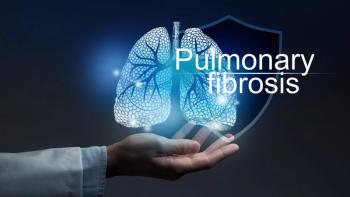
- Pharmaceutical Technology-05-02-2008
- Volume 32
- Issue 5
Florida Builds its Position in the Life Sciences
Florida is making its case for pharmaceutical and biotechnology research and development.
The pharmaceutical and biotechnology industries are a draw for states' economic development, and Florida is no exception. State and local authorities are making a concerted effort to attract investment in the life sciences. South Florida and Miami-Dade County, in particular, is on that bandwagon as it seeks to leverage its position as a business gateway to Latin America, develop synergies with other investment projects for life-science research in Florida, and strengthen the county's role in pharmaceutical research and development.
Attracting biosciences institutes
States such as New Jersey, Massachusetts, California, North Carolina, and Pennsylvania are among the leaders in attracting investment in the biosciences, but Florida's rank is rising. Between 2005 and 2007, state and local authorities generated over $1 billion in incentives for biosciences institutes, according to Russell Allen, president and CEO of
The lure of public funding has worked. The
The
The
The
The
The
Miami-Dade County builds life science muscle
Like its counterparts in other areas of Florida, Miami-Dade County is also seeking to take a piece of the growing life science pie in Florida. The county is home to 91 pharmaceutical manufacturers (includes pharmaceutical and nutritional/nutraceutical manufacturers), 149 research institutions, 187 medical laboratories, and 97 medical-device manufacturers, according to Jaap Donath, vice-president of research and strategic planning at
Schering-Plough (Kenilworth, NJ) announced in January 2008 that it was expanding its manufacturing operations in Miami Lakes, which includes the building out of an additional 10,000 ft2 at its Miami facility. The expansion includes manufacturing, packaging, warehousing, and office space.
Other life-science companies in Miami Dade County include the specialty pharmaceutical company
Strengthening pharmaceutical R&D
The
An important addition to UM is Pascal Goldschmidt, who was previously chairman of the Department of Medicine at
As an example, Margaret Pericak Vance and Jeffrey Vance, both former genetic researchers at Duke, joined the Miller School of Medicine and helped to open the Miami Institute for Human Genomics (MIHG) in January 2007. MIHG consists of five research centers focused on: human molecular genetics, disease models, genome technology, genetic epidemiology, and statistical genetics. Forty-five of their former 200 colleagues at Duke University left Duke to join the MIHG. MIHG was also awarded $80 million from the state of Florida to help fund the institute.
Bart Chernow, vice-president of special programs and resource strategy and vice-provost of technology advancement at the Miller School of Medicine, is another recent recruit. He was formerly vice-dean for research, technology, and corporate relations at the
Along with these efforts, UM has increased its take of federal research dollars. The University of Miami Miller School of Medicine received $88.1 million in funding from the
Building global research efforts
The UM Miller School of Medicine is leveraging Miami's position as a business gateway to Latin American as a means to foster pharmaceutical and biotechnology research. In 2007, the school launched the International Medicine Institute to promote education, clinical care, and research on a global scale. University officials have been in discussions with researchers in Latin America, Asia, and the Middle East.
"This initiative fits with our overriding mission of being a global leader in cutting-edge clinical care, medical research, and education," says Goldschmidt. The institute is in negotiations with developers that are building a medical complex in Cartagena, Colombia. If plans proceed as anticipated, the UM International Medical Institute would be a partner in the hospital by 2009. The research mission of the institute will be set up through the International Medicine Research Center. Initially, the research will focus on cardiovascular disease. Multicenter clinical trials will also be coordinated between the Miller School and the research centers in Latin America.
For capital improvements, the Miller School of Medicine is building a 182,000-ft2, $93.4-million Biomedical Research Building that will house wet-laboratory facilities, MIGH, and the Interdisciplinary Stem Cell Institute.
Fostering business incubation
Perhaps an even more important barometer for UM is its ability to stimulate growth in life science start-ups. "The university's leaders want to augment the translation of the discoveries made at the research bench into commercial products to help people," says Chernow. To that end, UM established the Wallace H. Coulter Center for Translational Research, through a $13-million grant from the Wallace H. Coulter Foundation. UM's sensory research institutes such as the Bascom Palmer Eye Institute and the University of Miami Ear Institute are also important sources of pharmaceutical research.
The school's strategy is to encourage business incubation in the life sciences through licensing or start-ups. "Commercialization may be via a spin-off company supported by the medical school or venture capital or other means of capitalization," says Chernow. "Licensing is an option; however, if licensed to a company too early you get pennies on the dollar. The value of discovery increases as risk is removed. Here at UM, we are using both strategies."
UM is building a life science park on seven acres adjacent to the Miller School of Medicine, which when completed, will hopefully have 1.4 million square feet of space. Work is expected to be underway in the next year and would be built in three phases based on demand and funding. The complex could house university research, private companies, and the university's start-up biotech companies, which now tally 10.
Converge BioTech (Miami) is an example of a recent UM start-up. The company, which was founded by UM's Camillo Ricordi, scientific director and chief academic offer of the university's Diabetes Research Institute. Ricordi specializes in iselt-cell transplantation, and Converge BioTech developed a hybrid cell transplant therapy effective against diabetes.
Another example is
Articles in this issue
over 17 years ago
Requiem for a Vaccineover 17 years ago
Report from Europeover 17 years ago
Converging InformationTechnology & Automation Teamsover 17 years ago
Unplugged: Developing Standards for Wireless Automationover 17 years ago
Dissolving the Insolubleover 17 years ago
In the Spotlight May 2008Newsletter
Get the essential updates shaping the future of pharma manufacturing and compliance—subscribe today to Pharmaceutical Technology and never miss a breakthrough.





